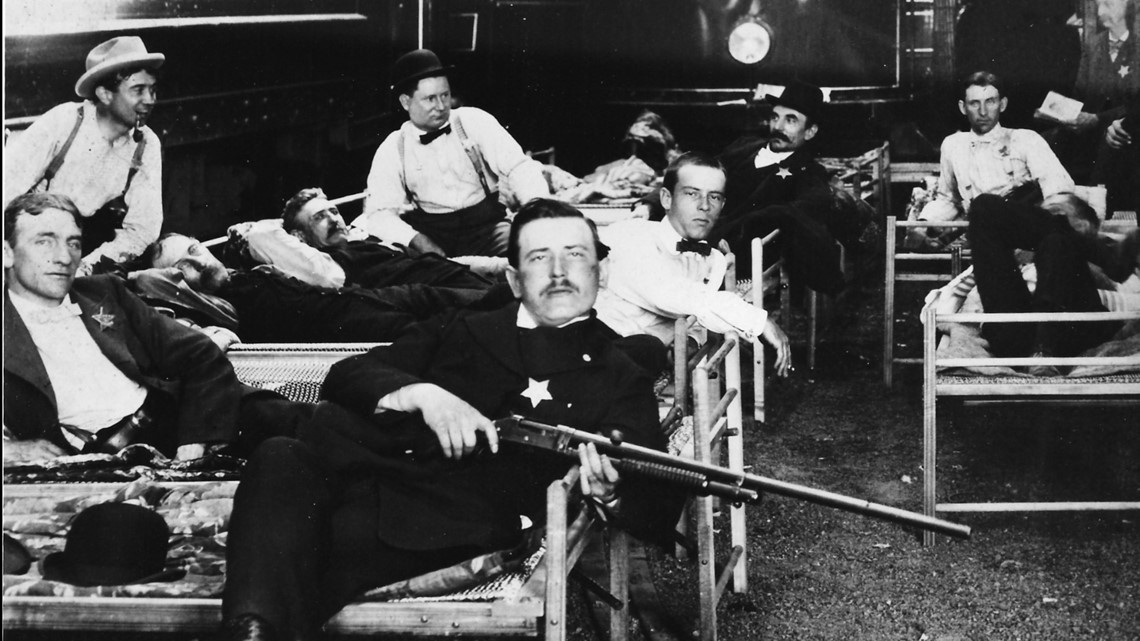ST. LOUIS — Historians still aren't sure who, on an otherwise quiet Sunday afternoon, fired the first shot in the heart of downtown St. Louis. History does agree that the unknown pistol shot was enough to trigger a deputized group of the city's elite to massacre three unarmed striking streetcar workers and injure 14 others.
The event, which came to be known locally as the Washington Avenue Massacre, marks the moment when tensions boiled over during the St. Louis and Suburban Streetcar Strike of 1900. It happened on June 10, 1900, at the intersection of North Broadway and Washington Avenue.
The strike began after company officials fired each of the St. Louis streetcar union's leaders. The workers, facing 17-hour shifts and wage reductions, started the strike in early May and pelted streetcars operated by people who crossed the picket lines with stones and bricks. Then-governor Lon Stephens authorized St. Louis' sheriff to form a posse primarily made up of bankers, attorneys and others whose profit was threatened by the strike. It swelled to around 1,300 members just before the massacre.
Some members of the deputized posse are pictured below:


The massacre is just one of the often forgotten moments in St. Louis' labor history, even though numerous events in that history catalyzed movements to improve labor conditions across the country. Remembering that history may be more important in 2023 than ever before as this year's Labor Day takes place amid a resurgence of worker-led walkouts and unionization efforts during the "summer of strikes."
A little-known pamphlet hopes to keep that history alive. The St. Louis Labor History Tour pamphlet, edited by labor historian Rosemary Feurer and with other St. Louis-area historians, was published in 1994 but is still the most in-depth account for major moments in St. Louis labor history.
Along with the Washington Avenue Massacre, the tour allows people to walk in the footsteps of numerous labor movements across St. Louis, including:
- The "Cradle of Liberty" and the birth of the St. Louis labor movement
- The creation of the first national trade union controlled and officered by women
- How a Union Station worker connected economic and civil rights
- The site of the second-largest sit-down strike on record
- When Sears was pressured to open up jobs to Black women
Take the tour for yourself :
Feurer, a Freeburg native and the owner of the largest collection of labor history in the U.S., said the pamphlet was an effort to preserve the often hidden and forgotten history of labor movements.
"Labor history invites the idea that change comes from below; that change comes from the people, and that has always been obstructed from our official histories," Feurer said. "There has been an effort at consensus that there was never any controversy, that economic growth got us everywhere, and all we needed to do was listen to our leaders. You find that there's a much different story if you look beneath the surface."
Rather than writing a book on St. Louis' labor history, Feurer believed that helping guide people to see where the events happened would help instill the gravity of the situations workers faced and work to connect people more to the city's history. Going and physically seeing the spaces where these struggles for better working conditions took place reportedly helped sear the memories in people's minds.
"Feeling the power of the past in the spaces of the city, that is why I made this little map," she said. "Think about what it would mean to have a powerful voice in your workplace. A little bit of reflection would be a good way to spend your Labor Day. We thank veterans on Veterans Day, you can thank a labor union for the eight-hour day and shorter work weeks."
Top St. Louis headlines
Get the latest news and details throughout the St. Louis area from 5 On Your Side broadcasts here.

